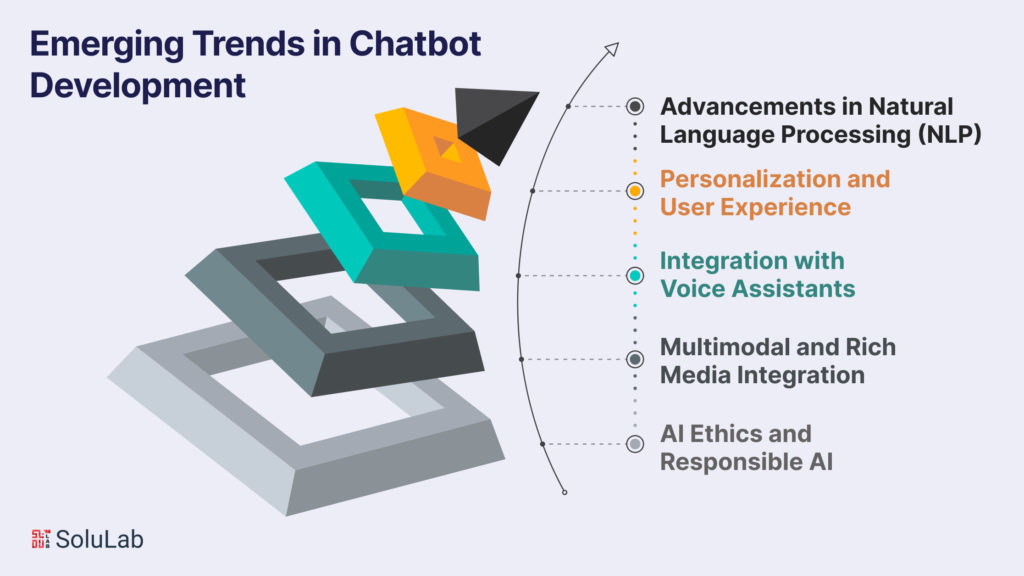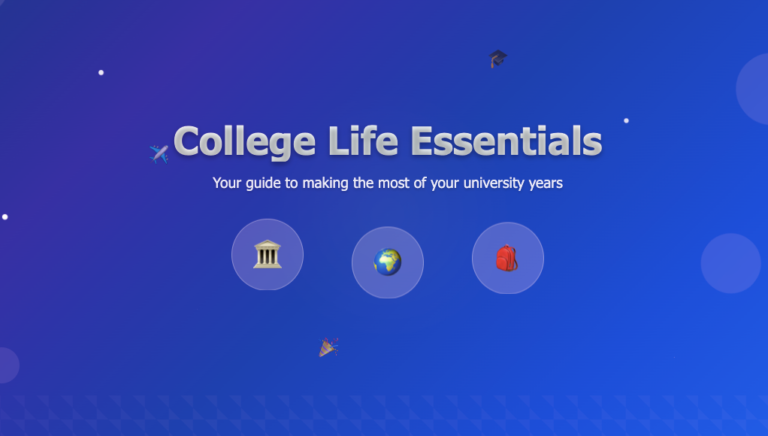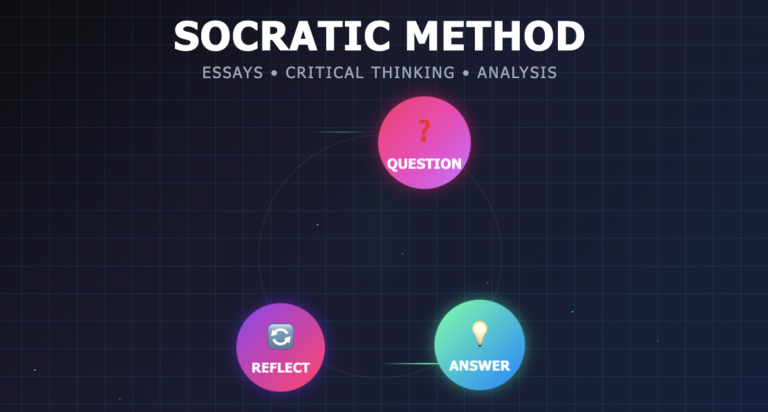
In an age where digital interactions have become integral to our lives, the rise of conversational AI, powered by chatbots, has been nothing short of transformative. These intelligent virtual agents have transcended their initial role as simple chat interfaces and have evolved into sophisticated conversational partners. As we look ahead, the future of conversational AI promises even greater marvels, with an array of trends and innovations poised to redefine the way we interact with technology.
To comprehend the breathtaking future of conversational AI, it’s essential to grasp its present state. Chatbots, with their ability to engage users in dynamic, human-like conversations, are already omnipresent across industries. They assist in customer support, streamline e-commerce experiences, offer healthcare advice, and even provide financial guidance. But the real excitement lies in what lies ahead.
Emerging Trends in Chatbot Development

-
Advancements in Natural Language Processing (NLP)
The heartbeat of conversational AI is Natural Language Processing, and it’s beating stronger than ever. With the advent of deep learning and the surge in NLP models, chatbots are getting better at understanding the nuances of human language. This means more accurate responses, improved sentiment analysis, and the capacity to converse fluently in multiple languages.
For chatbot developers, the advancement in NLP models like GPT-3 has been a game-changer. These models can comprehend context, generate coherent responses, and even exhibit a semblance of common sense. As a result, users are now interacting with chatbots that feel more human-like, making the conversational experience smoother and more intuitive.
A key development in NLP is multilingual chatbots. These bots can seamlessly switch between languages, breaking down language barriers and facilitating global communication. Whether you’re conversing in English, Spanish, or Mandarin, chatbots can comprehend and respond in your preferred language.
In addition, the impact of chatbots is becoming proficient at sentiment analysis. They can gauge the emotional tone of a conversation, allowing them to respond more empathetically. This capability has significant implications for industries such as customer service, where understanding and responding to customer emotions is crucial.
The ongoing advancements in NLP empower chatbots to engage users on a deeper level, opening doors to more sophisticated applications across various sectors.
-
Personalization and User Experience
Imagine a chatbot that knows you better than you know yourself. The future of chatbots is all about personalization. These virtual assistants will be context-aware, able to remember past interactions, and even predict your needs.
What does this mean for you? A more user-centric experience. If you’re a regular customer of an e-commerce platform, your chatbot might remember your preferences, previous purchases, and even the items you were browsing but didn’t buy. This level of personalization allows chatbots to offer tailored recommendations and make your shopping experience smoother.
In healthcare, context-aware chatbots can take into account your medical history, current symptoms, and even your emotional state to provide more relevant advice. In finance, they can help manage your investments based on your risk tolerance and financial goals.
Read Our Blog: Top 10 AI Development Companies
User-centric design principles are at the forefront of chatbot development. These bots will adapt to your unique needs and preferences, making the digital experience feel more intuitive and human-like.
As chatbots become adept at understanding context and providing personalized assistance, they’re set to become an indispensable part of our daily lives.
-
Integration with Voice Assistants
Voice-controlled smart speakers and devices are on the rise. It’s a natural progression for chatbots to extend into the realm of voice assistants. This integration is blurring the lines between chatbots and voice-activated virtual assistants like Siri, Alexa, and Google Assistant.
Picture this: You’re in the kitchen, your hands covered in flour, and you need a recipe. You don’t have to touch your phone or computer. You simply say, “Hey [Your Favorite Voice Assistant], find me a bread recipe.” In seconds, you have the recipe spoken to you step by step. This is the future of voice-controlled chatbots.
Voice-controlled chatbots can also be part of your smart home. You can ask them to adjust your thermostat, play music, or even lock your doors—all through natural language commands.
The implications of this integration go beyond convenience. It’s shaping the future of voice commerce, enabling you to make purchases, book services, and complete tasks with a simple voice command. It’s a transformative development that promises a future where technology is seamlessly integrated into our lives.
-
Multimodal and Rich Media Integration
In the world of future chatbots, it’s not just about text-based conversations. It’s also about rich media experiences. Chatbots are expanding their repertoire to include images, videos, and interactive content.
Visual chatbots are becoming increasingly common. They can process images you send, analyze them, and provide information or assistance based on those images. For instance, you can take a picture of a plant in your garden, and a chatbot can identify the plant species and offer care instructions.
But it doesn’t stop at static images. Chatbots are venturing into videos and animations, providing engaging content that goes beyond words. Whether it’s educational content, product demonstrations, or entertainment, chatbots are becoming versatile content deliverers.
For marketers, this opens up new horizons. Interactive content, guided tours, and immersive experiences can be delivered through chatbots. Imagine exploring a virtual art gallery guided by a chatbot, or trying on virtual clothes with a chatbot helping you choose the perfect outfit.
The implications are profound in fields like e-learning, where chatbots can deliver dynamic and interactive lessons. From tutorials to simulations, chatbots are turning learning into a more engaging and personalized experience.
As chatbots evolve to incorporate rich media, their capacity to engage users will expand, making them essential in various domains like education, marketing, and customer support.
-
AI Ethics and Responsible AI
As chatbots grow more sophisticated, ethical considerations become paramount. We must ensure that the power of AI is harnessed responsibly, protecting user privacy, mitigating bias, and upholding transparency.
One of the core ethical concerns in chatbot development is data privacy. Chatbots often handle sensitive information, from personal health data in healthcare chatbots to financial information in banking chatbots. Ensuring compliance with data protection regulations is essential. Users must have confidence that their data is secure and used responsibly.
Read Blog: How to Build an AI-Powered Chatbot For Your Business?
Bias mitigation is another significant challenge. Chatbots learn from vast datasets, and if those datasets contain biases, the chatbot may inadvertently perpetuate them. This can result in discriminatory or unfair behavior. Developers must actively work to eliminate biases and ensure that chatbots treat all users fairly.
Transparency and explainability are ethical imperatives. Users should understand that they’re interacting with a chatbot and not a human. Furthermore, chatbots should be able to explain their reasoning and decision-making processes when necessary.
As we move into the future, the responsible development of chatbots is central to their success. Responsible AI doesn’t just protect users; it also ensures that chatbots continue to gain trust and provide valuable services.
Industry-Specific Applications

The potential of chatbots isn’t confined to any single domain. Their adaptability and versatility make them valuable across various industries, from healthcare to finance and beyond. Let’s explore how chatbots are making a significant impact in these sectors.
-
Healthcare
Healthcare chatbots are becoming a vital tool in providing medical information, remote consultations, and even mental health support. They offer a unique blend of accessibility, efficiency, and empathy. Here’s how they are revolutionizing healthcare:
1. Virtual Health Assistants: Chatbots in Healthcare are playing the role of virtual health assistants, helping users monitor their health, set medication reminders, and even track symptoms.
2. Telemedicine Support: Telemedicine is on the rise, and healthcare chatbots are an integral part of this trend. They can help users schedule appointments, connect with doctors, and offer pre-consultation guidance.
3. Mental Health Support: Mental health chatbots are offering users a listening ear. They provide support, coping strategies, and even early intervention for mental health issues.
-
E-commerce
E-commerce chatbots are streamlining the online shopping experience and driving sales. They are the virtual shop assistants of the future. Here’s how they are reshaping the world of online retail:
1. Enhanced Customer Service: E-commerce chatbots offer real-time customer support, answering product-related queries, assisting with order tracking, and resolving issues swiftly.
2. Personalized Shopping Experiences: These chatbots analyze user preferences and past shopping behaviors to recommend products that align with individual tastes, boosting sales and customer satisfaction.
Read Our Blog: AI Use Cases and Applications in Key Industries
-
Customer Support
Customer support chatbots are reducing response times and enhancing customer experiences. They provide efficient, round-the-clock assistance. Their applications include:
1. Automated Issue Resolution: These chatbots can handle routine customer inquiries, such as password resets, order tracking, and billing inquiries, leaving human agents to tackle more complex issues.
2. Improved Self-Service Options: By guiding users through troubleshooting steps or providing step-by-step instructions, customer support chatbots empower users to resolve issues independently.
-
Finance
Chatbots are becoming financial advisors and fraud detectors in the finance industry. They offer a range of benefits, from investment guidance to security. Here’s how they’re transforming finance:
1. Chatbots for Financial Advice: Personal finance chatbots assist users in budgeting, saving, and making informed investment decisions based on their financial goals and risk tolerance.
2. Fraud Detection and Prevention: In the battle against financial fraud, chatbots can actively monitor accounts for suspicious activity and alert users to potential threats.
The versatility of chatbots is what makes them so powerful. They are customizable to fit the specific needs and requirements of various industries. Whether it’s healthcare, e-commerce, customer support, or finance, chatbots are becoming essential tools for enhancing services, reducing costs, and improving user experiences.
Read Blog: AI in Finance: The Future of Smart Investments and Risk Management
Innovations in Chatbot Platforms
The future of conversational AI is not solely reliant on chatbots themselves but also on the platforms that enable their development and deployment. In this section, we’ll explore some significant innovations in chatbot platforms that are propelling the technology forward.
-
Low-Code/No-Code Chatbot Development
Traditionally, chatbot development required a deep understanding of programming and AI. However, the emergence of low-code and no-code development platforms has democratized chatbot creation, making it accessible to non-technical users.
1. Accessibility for Non-Technical Users: Low-code and no-code platforms allow individuals with minimal programming knowledge to design and develop chatbots. This means that subject matter experts and business professionals can directly contribute to chatbot creation.
2. Rapid Prototyping: These platforms enable the rapid prototyping of chatbots. This results in quicker development cycles, allowing businesses to experiment and innovate at a faster pace.
-
Open-Source Solutions
Open-source chatbot platforms are fostering community-driven development and collaborative innovation. These platforms, often backed by communities of developers, offer several advantages.
1. Benefits and Limitations: Open-source solutions provide transparency, customization, and a wide range of pre-built components. However, they may require a deeper technical understanding and ongoing maintenance.
2. Community-Driven Development: The collaborative nature of open-source development means that numerous contributors work on improving and extending these platforms. This leads to a wealth of options and innovations.
Read Our Blog: 10 Benefits of Incorporating Generative AI in the Manufacturing Process
Open-source chatbot platforms are becoming pivotal in the landscape of Conversational AI, especially in contexts where unique requirements demand customization and community-driven solutions.
These innovations in chatbot platforms are pivotal in shaping the future of conversational AI. They make the development process more inclusive and empower businesses and individuals to create and deploy chatbots that address their specific needs and preferences.
As chatbot platforms continue to evolve and become more accessible, we can expect an even wider range of applications, from small business chatbots to enterprise-level virtual assistants, all tailored to meet unique requirements.
The innovations in low-code/no-code development and open-source solutions are setting the stage for a more dynamic and diverse chatbot ecosystem. These platforms are the foundation upon which future chatbots will be built, expanding their reach and relevance across various industries and applications.
Challenges and Future Directions

As we explore the fascinating world of conversational AI and chatbot development, it’s imperative to recognize the challenges and chart the course for future directions. The road ahead is filled with opportunities, but it’s also beset with hurdles that demand our attention.
-
Data Privacy and Security
The rise of chatbots means that more of our personal data is being processed and stored. This intensifies the need for robust data privacy and security measures.
1. Compliance with Regulations: Developers must ensure that chatbots adhere to data protection regulations like GDPR and HIPAA, depending on the industry they serve.
2. Protecting User Data: Users must have confidence that their data is being handled responsibly. This involves secure data storage, encryption, and secure data transmission.
Read Blog: Top 7 Generative AI Integration Services For Your Business
-
Interoperability and Standards
The chatbot ecosystem is expanding, and as it does, interoperability and standards become crucial.
1. Developing Cross-Platform Standards: Chatbots should seamlessly work across various platforms, devices, and operating systems. Standards and interoperability agreements must be established to ensure chatbots can interact cohesively in this diverse landscape.
2. Ensuring Chatbot Compatibility: A user’s experience should not be fragmented when switching between different chatbots. Standardized communication protocols can make sure chatbots understand and build upon each other’s interactions.
-
The Road to AGI (Artificial General Intelligence)
The grand vision for chatbots is the development of Artificial General Intelligence, or AGI, which would endow them with human-like cognitive abilities.
1. The Long-Term Vision: AGI chatbots aim to not just understand context but also reason, learn from experience, and exhibit human-like common sense. Achieving AGI is a significant undertaking with profound implications.
2. Ethical Considerations: The pursuit of AI-powered chatbots involves addressing ethical challenges, such as ensuring the responsible use of advanced AI and mitigating any negative impacts.
As we look to the future of conversational AI and chatbot development, we must remain mindful of these challenges and tread carefully as we embark on the path to AGI. Responsible development and adherence to ethical guidelines will be paramount.
Conclusion
The future of conversational AI and chatbot development is a journey marked by innovation, inclusion, and responsibility. We’re on the brink of an era where chatbots will be more human-like, more versatile, and more intertwined with our daily lives.
These AI-driven virtual companions will transform industries, streamline processes, and improve user experiences. They’ll enhance healthcare, revolutionize e-commerce, refine customer support, and offer invaluable financial guidance. But we must not forget the ethical considerations that come with these advancements. Privacy and security, interoperability, and responsible AI development are all non-negotiable aspects of our journey into the future of chatbots.
Looking to lead the way in the Conversational AI revolution? SoluLab is your premier AI development service and chatbot development company. With a proven track record of innovation and expertise, we specialize in crafting cutting-edge chatbot solutions that cater to your unique needs. Partner with SoluLab to harness the power of AI-driven virtual companions and stay ahead in the dynamic world of technology.
FAQs
1. What is conversational AI, and how does it differ from traditional chatbots?
Conversational AI refers to artificial intelligence systems designed for human-like interactions. While traditional chatbots are rule-based and follow predetermined scripts, conversational AI leverages advanced natural language processing (NLP) and machine learning to engage in more dynamic, context-aware conversations, making interactions feel more human-like and intuitive.
2. What industries can benefit from chatbot integration, and in what ways?
Chatbots have versatile applications across various industries. In healthcare, they assist with appointment scheduling and provide telemedicine support. E-commerce benefits from chatbots by offering personalized shopping experiences and efficient customer support. In customer service, chatbots automate issue resolution, and in finance, they offer financial advice and help detect fraud.
3. What are low-code/no-code platforms, and how do they affect chatbot development?
Low-code/no-code platforms are tools that simplify the development of applications, including chatbots, by reducing the need for extensive programming knowledge. They empower non-technical users to create chatbots, resulting in quicker development cycles and greater accessibility for a wide range of users, including business professionals and subject matter experts.
4. What ethical considerations should be addressed in chatbot development?
Ethical considerations in chatbot development include data privacy and security to protect user information, the development of standards and interoperability to ensure seamless chatbot interactions, and the responsible pursuit of Artificial General Intelligence (AGI) to mitigate potential negative impacts. Transparency, fairness, and bias mitigation are also crucial in ethical chatbot development.
5. What does the future hold for chatbots, and how will they continue to evolve?
The future of chatbots is characterized by enhanced user personalization, integration with voice assistants, the adoption of rich media, and a focus on responsible AI development. Chatbots are expected to expand their reach in various industries, offering more dynamic and diverse applications. Further innovations in natural language processing, along with ethical considerations, will shape their evolution.






